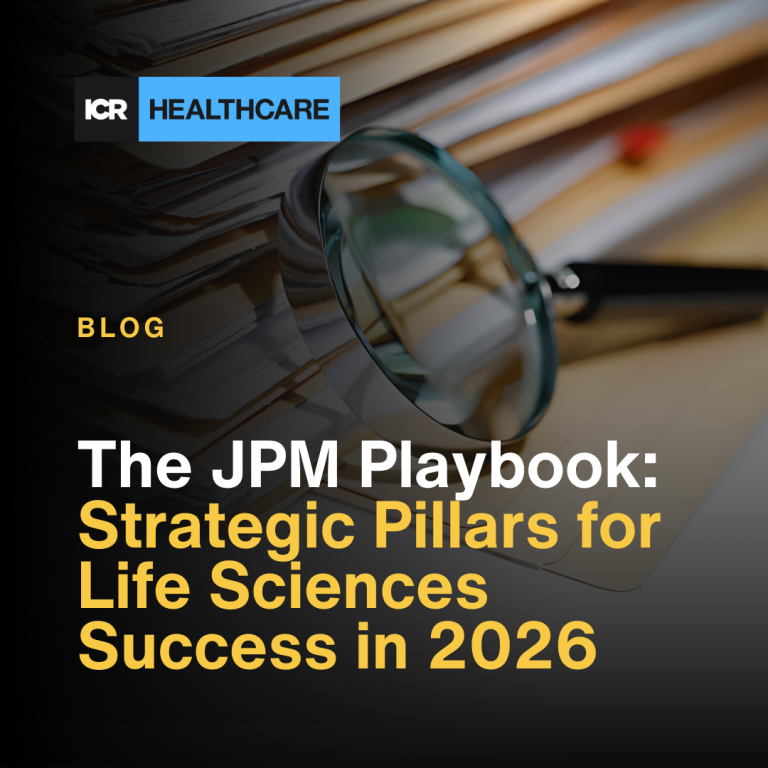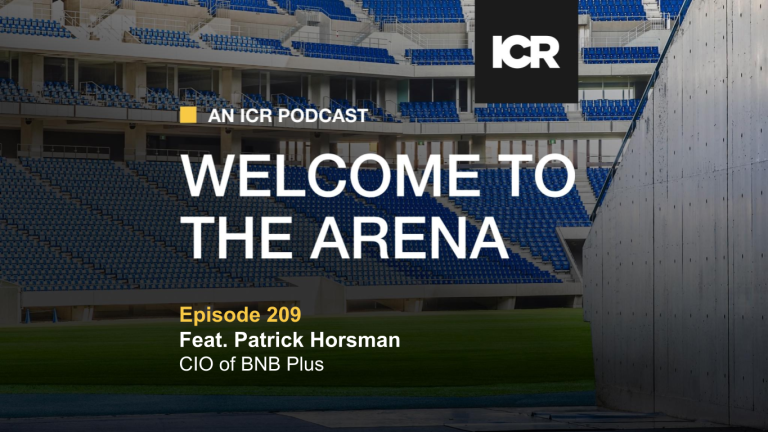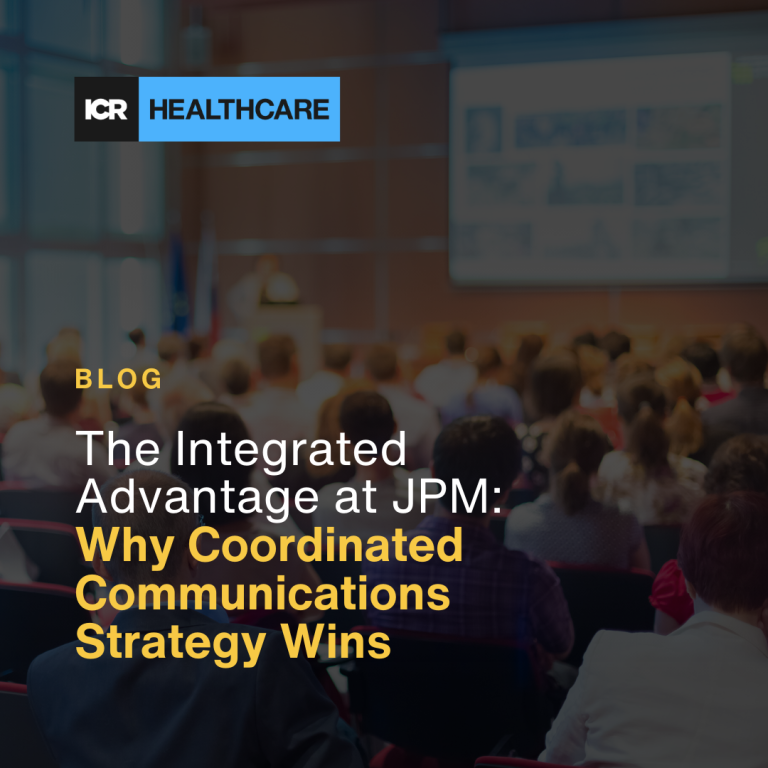The IPO market has seen a resurgence in 2025 – per the SEC, 83 IPOs priced totaling $11.7 billion raised in Q1 of 2025. This is 88.6% higher in terms of number of IPO and 34.5% higher in terms of proceeds raised relative to the same period in 2024. ICR Healthcare advised on 2 IPOs in 2025 including Omada Health (June) and Carlsmed (July) and is currently advising on several others, including three companies with S-1s on confidential file. Through our extensive experience advising companies in the MedTech, Tools / Dx and Healthcare Technology space, we have seen some key themes emerge and wanted to share a few lessons learned with companies contemplating an IPO in 2026.
Develop an early and frequent dialogue with public investors
We spoke with several top institutional investors during the “nuclear winter” for IPOs from 2022 to 2024 and an important and consistent message we heard was that they needed more time to get familiar with companies planning late-stage private financings or IPOs. During the heyday of the frothy SPAC and IPO boom in 2020 and 2021, investors were not afforded sufficient time to conduct proper diligence on companies and were also being asked to make investment decisions on impractical deadlines.
Introducing our private clients to institutional investors early has always been a critical part of ICR Healthcare’s approach. This has become even more critical given the message we heard from investors and is the underpinning of our IPO Advisory recommendations to management teams and boards of our existing and prospective IPO Advisory clients. To do so, we help our clients by:
- Developing a succinct but cogent investor presentation that answers a few simple questions:
- What do you do?
- What problem are you solving and how?
- How do you plan to grow?
- Who do you compete with?
- How do you make money?
- Raising visibility with targeted investors at banking / industry conferences 12 – 18 months before an IPO
- Conducting a NDR (hosted by potential active bookrunners) before the IPO organizational meeting
This cadence of investor dialogue has enabled our clients to not only introduce the story well before an IPO, but also to establish credibility by outperforming on high-level financial and non-financial metrics. This dialogue also resulted in the test-the-waters (TTW) and IPO roadshow meetings being focused on answering investors’ key diligence questions and providing them with an ability to make informed investment decisions versus simply trying to get to know the company in a limited window of time.
While TAM still matters, investors are more focused on SAM (serviceable addressable market) and competitive landscape
“Growth at all costs” was an aphorism that permeated the 2019-2021 period. This phenomenon was driven by companies providing lofty revenue growth estimates “supported” by massive total addressable markets (TAM) and the companies’ ability to penetrate those TAMs. Companies started missing their own revenue estimates because it became evident that, while the TAM may be massive, the companies were servicing a smaller part of the TAM and the competitive landscape was more intense than anticipated. As a result, we have seen investors drilling down on the serviceable addressable market (SAM) and the veracity of the company’s competitive differentiation. This has been particularly evident in the high-growth MedTech space particularly if a company has created a device or procedure that could disrupt an existing paradigm dominated by larger and more established competitors.
Revenue scale and predictability has led to A Tale of Two Cities!
Investors have reverted to the mean when it comes to revenue scale. Broadly speaking, investors look for:
- High-growth MedTech and Tools / Dx companies with minimum run-rate revenues in the $40–60 million range and expected revenue growth of 25–30% over the next 2–3 years
- Healthcare technology / digital health companies with run-rate revenues greater than $200 million and expected revenue growth of 20–25% over the next 2–3 years
Investors are very focused on growth drivers and challenging management teams to prove that the growth algorithm is durable. While companies at the lower end of the abovementioned revenue scale have been able to go public, we have seen a number of top-tier healthcare investors choosing to stay on the sidelines and taking positions once the growth algorithm has been demonstrated in the public domain. A number of these IPOs have struggled post-IPO and the stocks have traded at or below IPO price.
The “tale” is very different when it comes to companies with significantly larger revenue scale which have seen “blow-out” IPOs because in investors’ minds the companies have proven revenue predictability and there is a scarcity value to these stories. These stocks have demonstrated strong offer / 1 day and offer / current performance.
Back to basics – Profitability Matters!
An important change in the current vintage of IPOs is the investor focus on profitability. A key question that investors ask our clients with negative EBITDA is “at what revenue scale do you think you will be EBITDA positive and how many quarters will it take to get there?” A second derivative of this question is “when will you be cash flow positive?”. We have seen investors focus on the following key financial attributes and pre-emptively work with our clients to help craft a reasonable “path to profitability” story.
- On average, investors want to see steady state gross margins for high growth MedTech and Healthcare Technology companies in the 60–80% range. Companies that have not achieved gross margins in this range need to craft a story that highlights the steps that they are taking to achieve steady state gross margins.
- Companies with higher revenue scale have demonstrated their ability to stabilize their operating expenses thereby extracting operating leverage and highlight an achievable path to being EBITDA positive. This story has been well received by investors, which in turn has helped drive the success of their IPOs
- On the other hand, investors have scrutinized COGS and OpEx trends for companies with a smaller revenue scale because their path to being EBITDA positive is not as apparent.
What is reasonable leverage at IPO?
Private equity-backed healthcare services & technology companies with significantly higher revenue scale, but high single digit to low double-digit revenue growth, attractive EBITDA margin profile, and strong EBITDA to cash flow conversion have been received well by investors. A key focus area is leverage which was in the 6.0x to 7.0x in the case of a few sponsor-backed company IPOs. Investors have been vocal during NDR and TTW meetings that they would leverage (pro forma for the IPO) to be below 4.0x. This has been an important consideration in IPO sizing.
Is valuation a science or art?
Investors with a long-term investment horizon tend to take a fundamental (“science”) approach to valuation using (i) a discounted cash flow analysis or (ii) determining steady state EBITDA levels either in $ or % terms and using a discounted EV / EBITDA method on current revenue levels. However, the key discourse coming out of TTW and IPO roadshow meetings is “what are the appropriate comps for this company” which lends itself to a lot of subjectivity leading to an “artful” negotiation between investors and bookrunners
“Beat & Raise” has a new friend – “Don’t be too conservative either!”
The concept of developing a “beat & raise” model to share during research analyst diligence has been a time-tested part of the IPO process. This remains a critical element of our advice to clients when we’re developing the analyst models. Analysts and investors recognize that companies need to be conservative, particularly in the first few quarters in their life as a public company and subsequent “earnings beats” have been well-received by investors.
However, a new phenomenon that we have seen in recent IPOs is that research analysts and investors are pushing back on management teams if they believe the near-term earnings guidance has not been appropriately updated to reflect a “beat” in the quarter during which the IPO is taking place. Investors and analysts have been vocal that management teams will not be given credit for big beats in early quarters, post-IPO, if the updated earnings guidance appears to be a “sandbag”. This is an important balancing act that management teams are increasingly having to contend with as they prepare for life as a public company.
Epilogue
We are hearing from a number of companies that they’re beginning to discuss IPO Readiness. The thoughts highlighted above are an important part of our ongoing dialogue with these companies. This article was written to disseminate our key leanings to a broader audience and welcome any management teams and boards who may be contemplating IPOs to reach out to Sameer Khambadkone at ICR Healthcare. We would be happy to schedule a meeting to discuss further.



